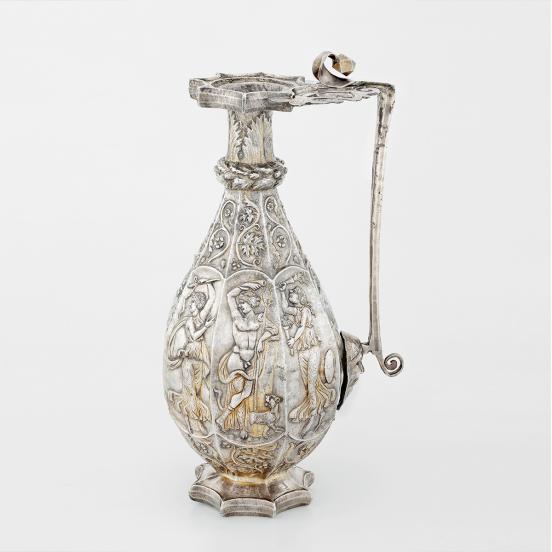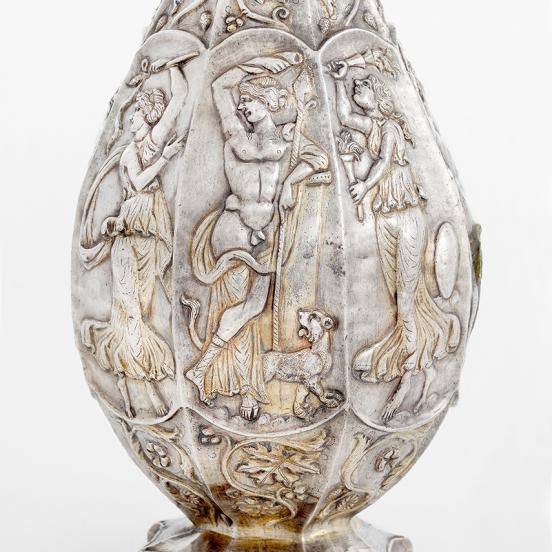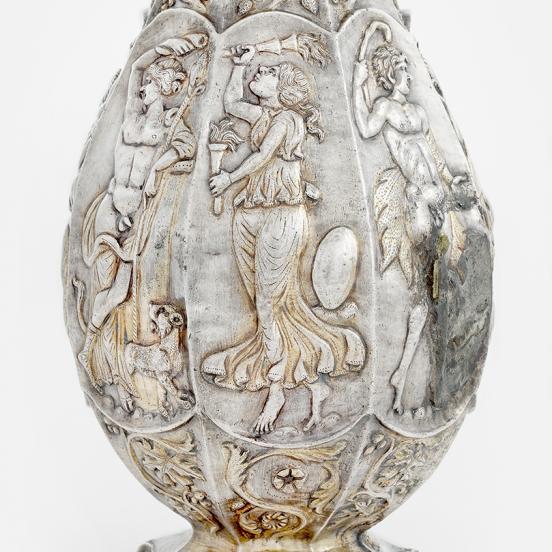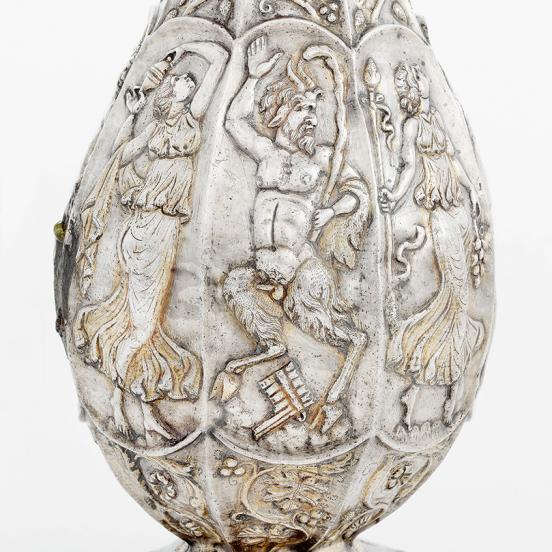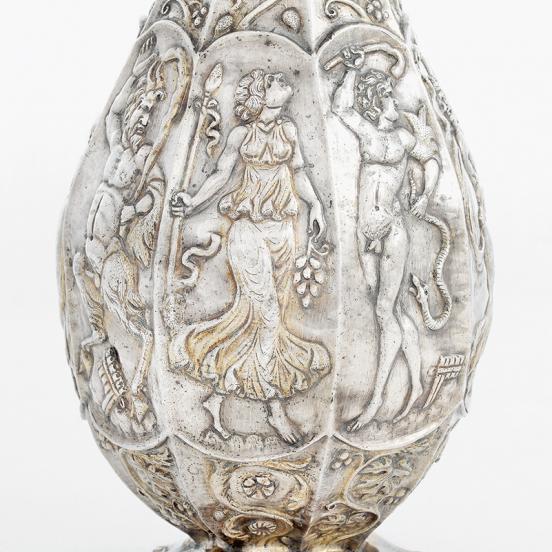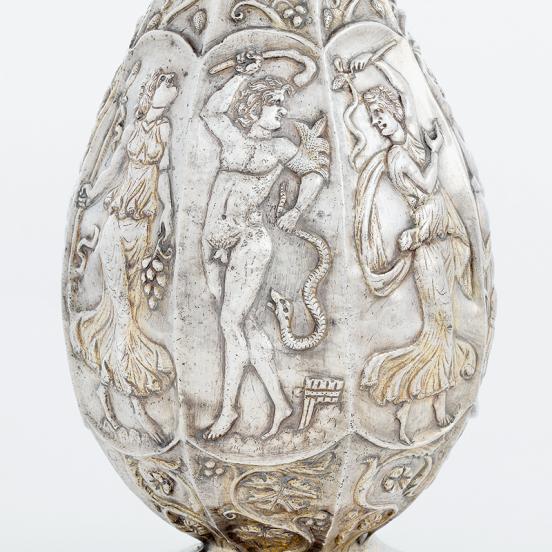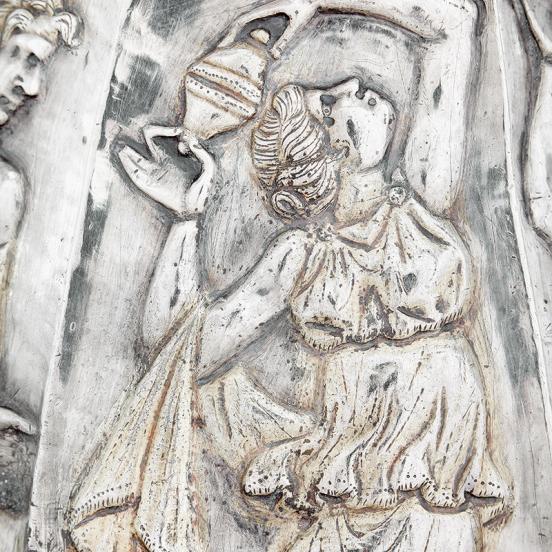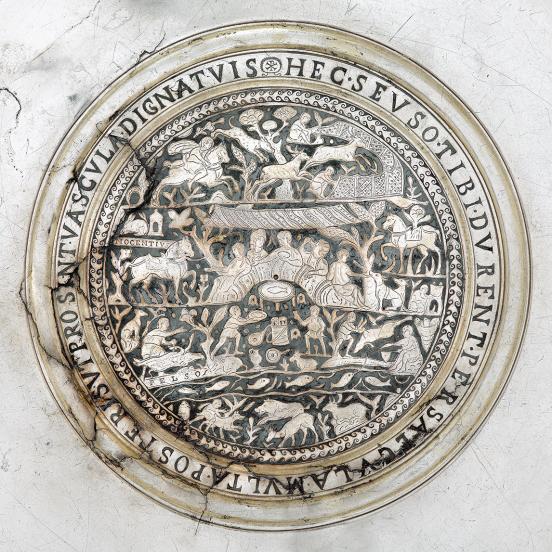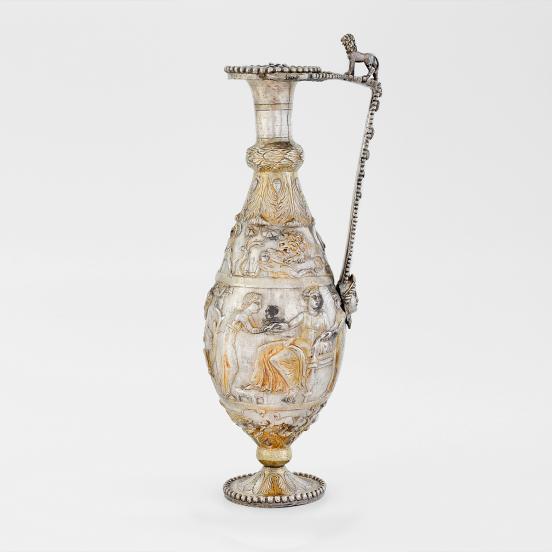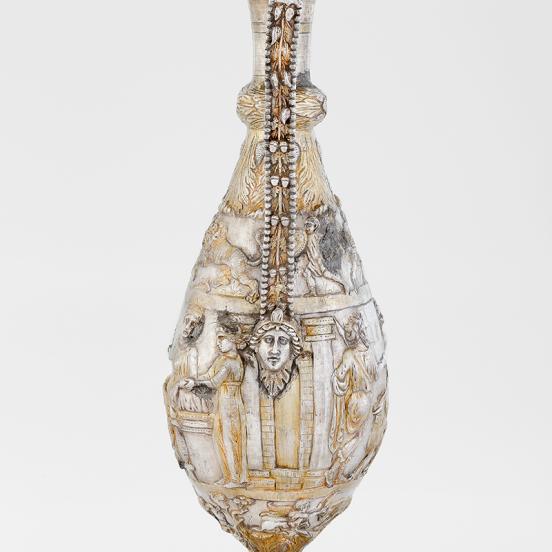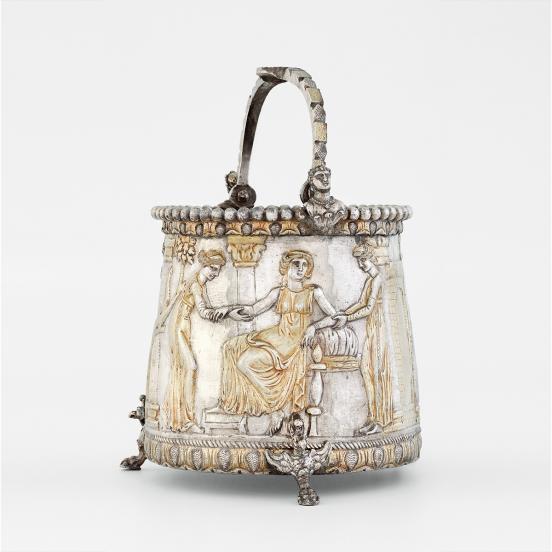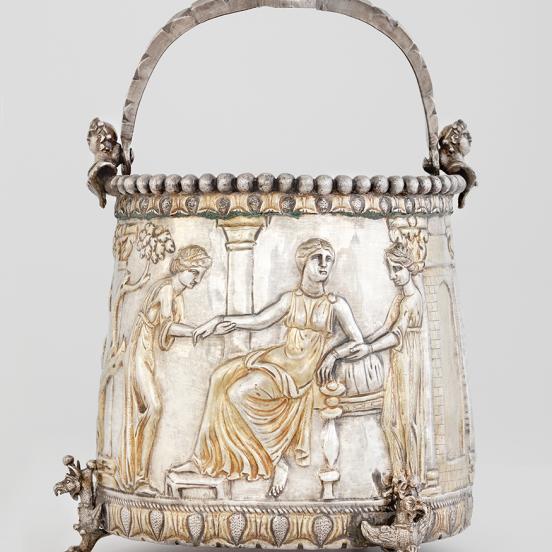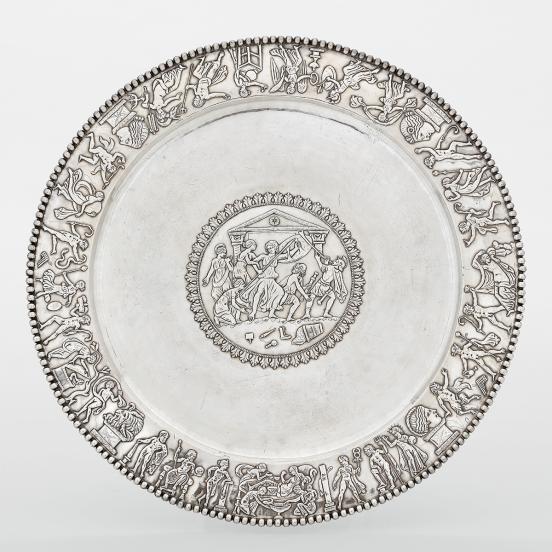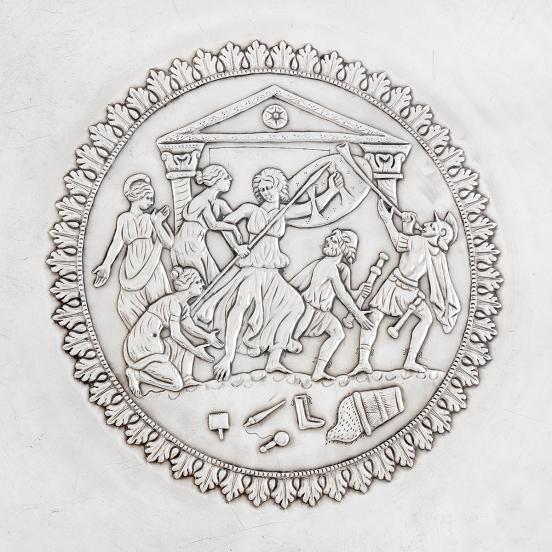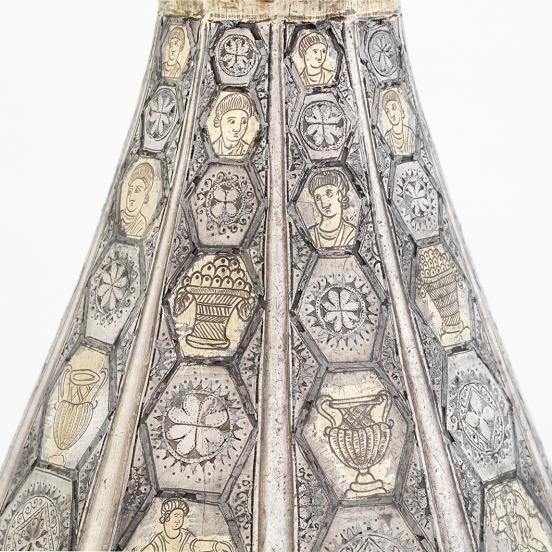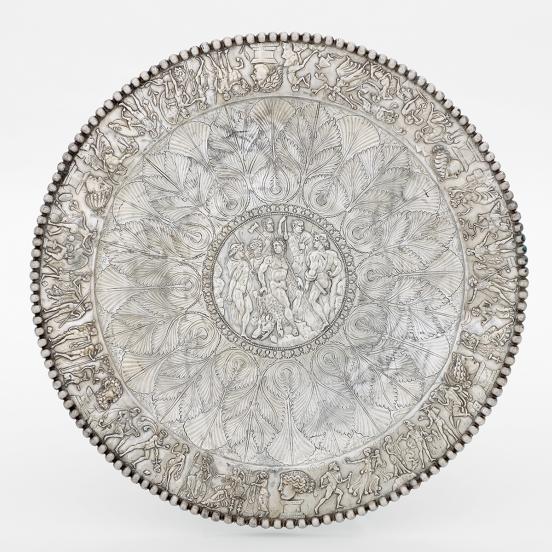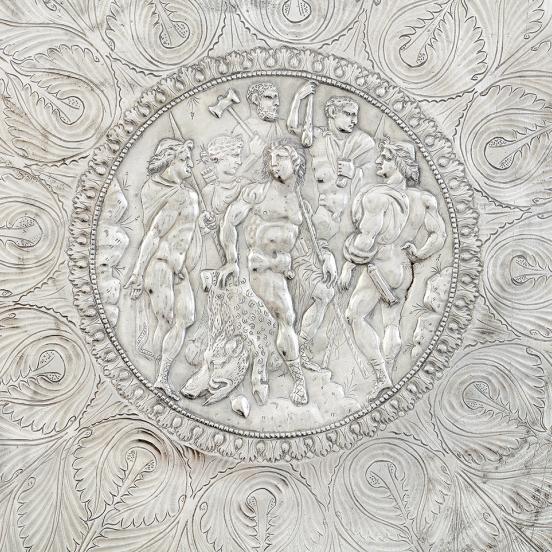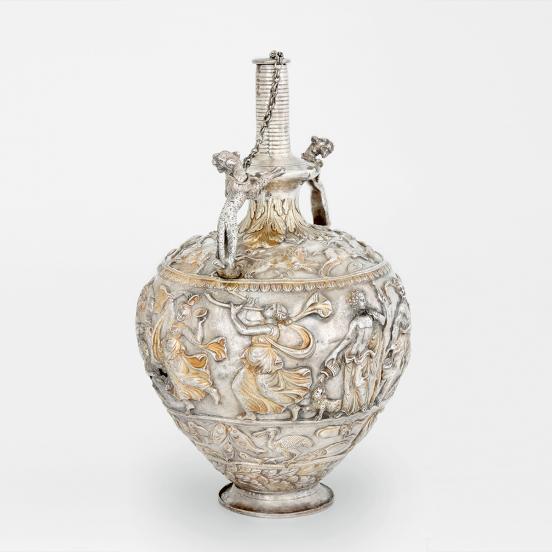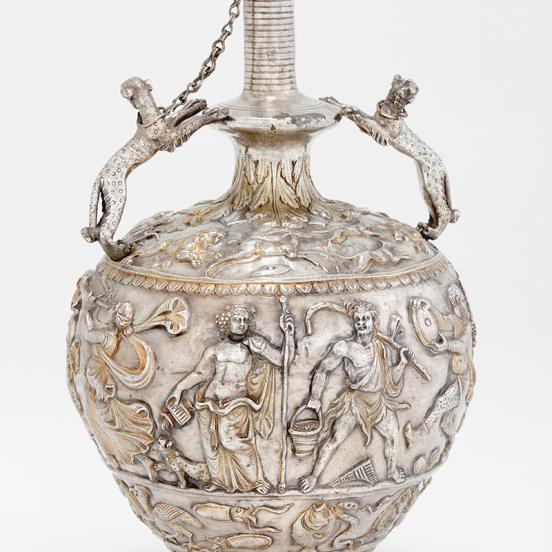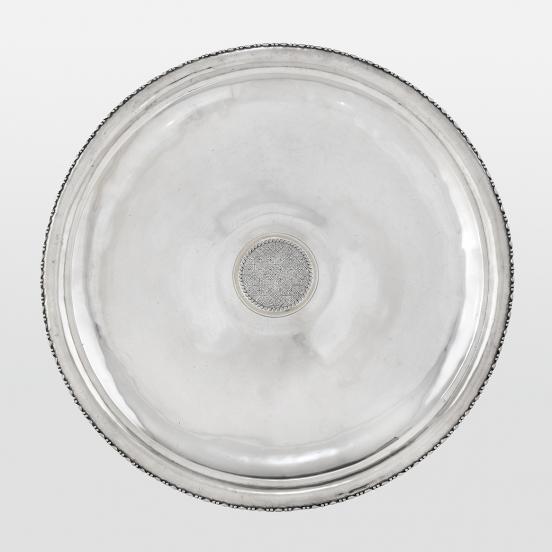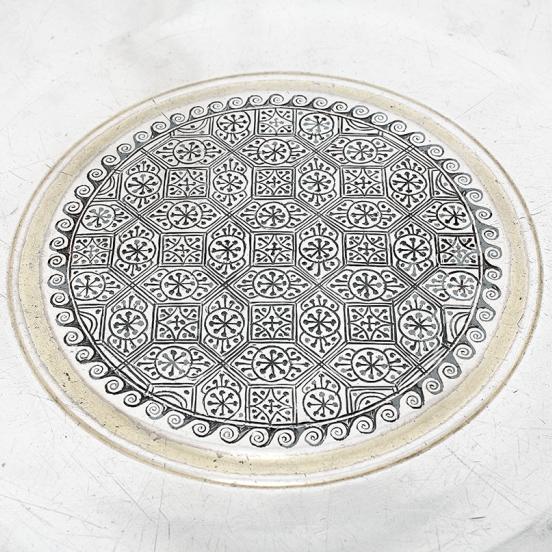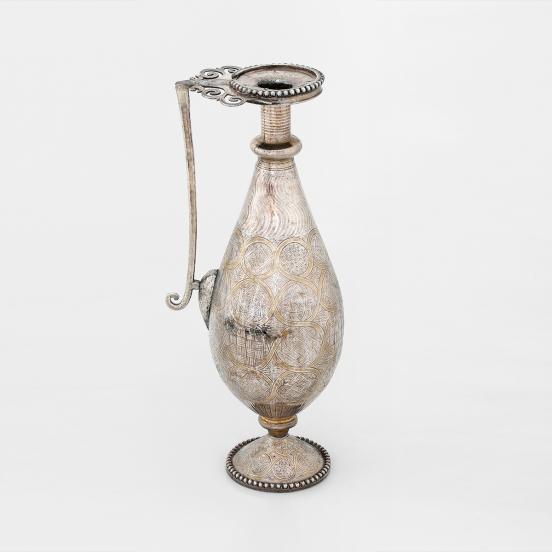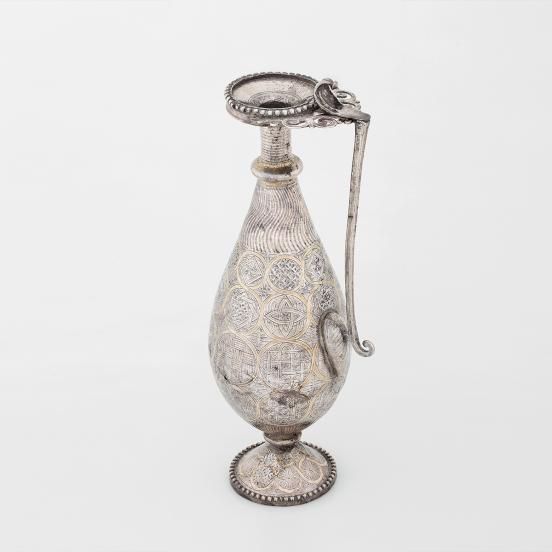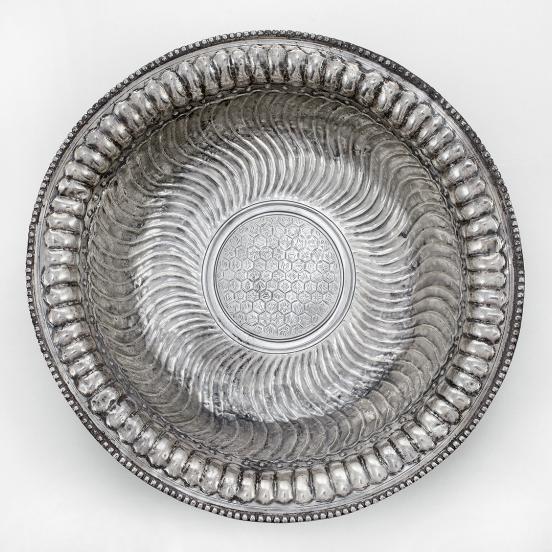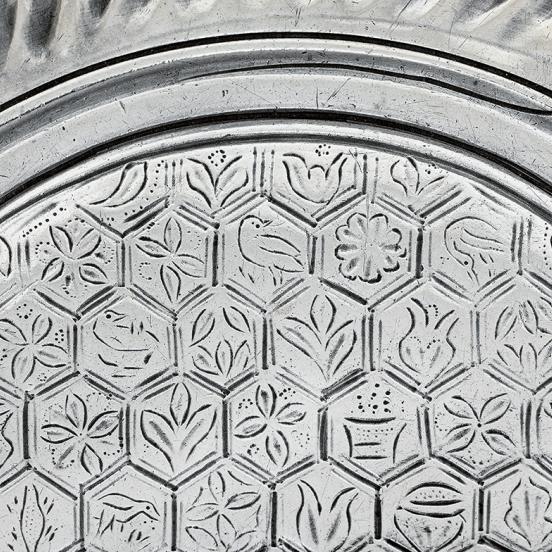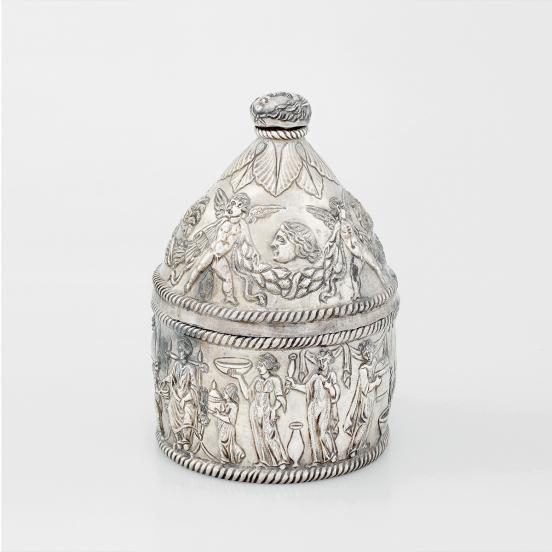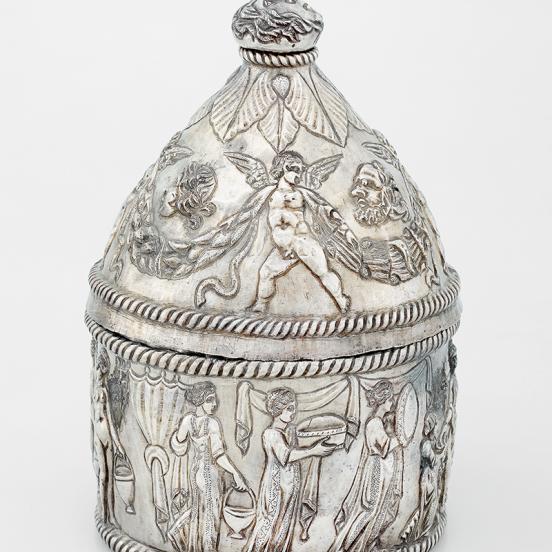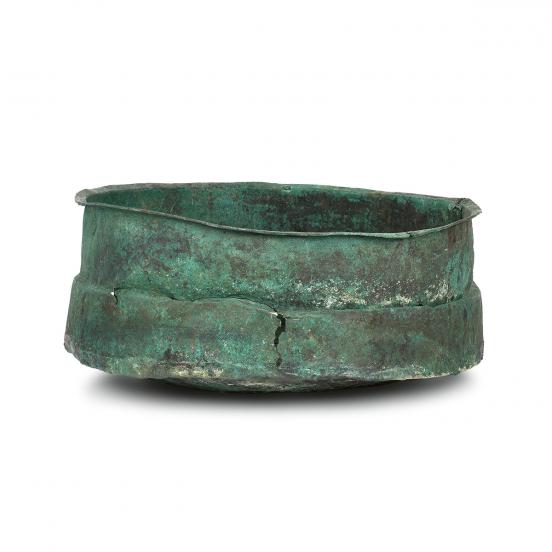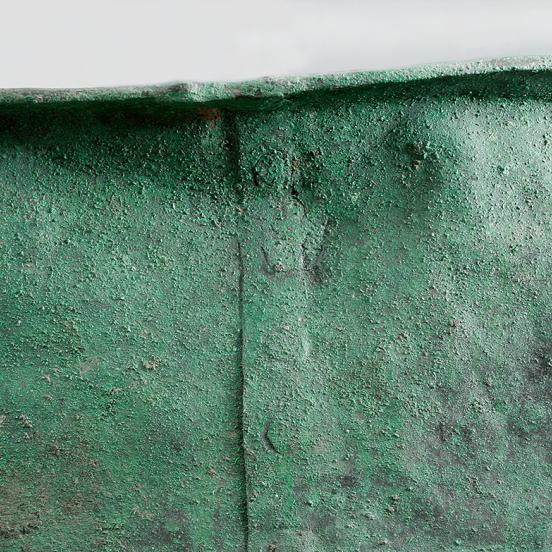The Dionysiac Ewer
The reliefs covering the entire surface of the Seuso treasure’s smallest ewer recall Dionysus and the members of his cheerful entourage. The figures represented one by one on the eight sides of the ewer follow each other and compose a festive procession. Bacchantes wildly dancing in ecstasy, holding torches and musical instruments, satyrs brandishing their shepherd’s crooks and the goat-legged half-man Pan, who was Dionysus’s playmate, can be recognised in the scenes. The deity contentedly observes his followers he had cast a spell on and their wild frenzy. A panther tamed as a meek pet is standing at his feet. Tendrils of grape and acanthus frame the procession. The exuberant abundance of the plants is a symbol of Dionysus’s presence. Besides recalling the deity himself, motifs and scenes with Dionysiac themes by late Antiquity had increasingly turned into allegoric representations of gathering of friends, banquets and the happiness and joy of life on earth.
The formerly gilded vessel was probably a wine jug, judging by its shape and the theme of representation.
Height: 43.5 cm
Diameter: 14.05 cm
Weight: 3 kilograms
Material: silver of 94–97% purity

